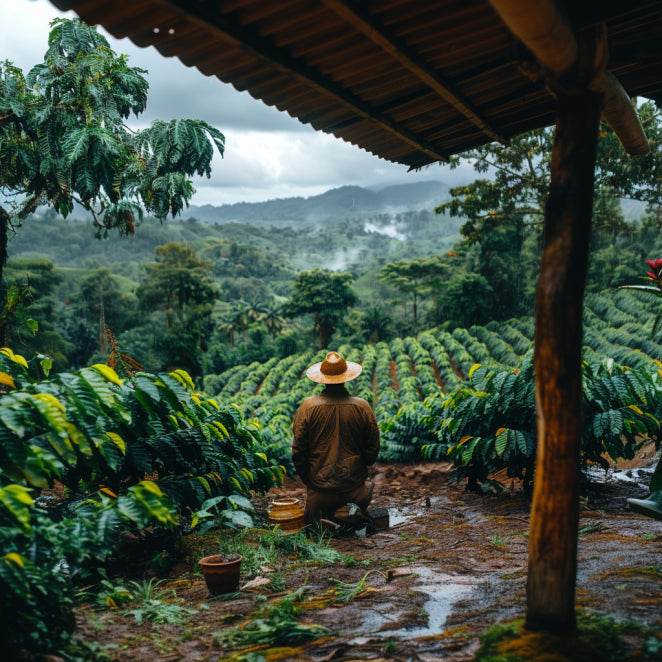
The Impact of Climate Change on Coffee Production
Share
In the intricate world of coffee, akin to the complex realm of whiskey, the diversity and depth of flavors are vast and profound. Coffee, in its myriad forms, presents an array of experiences—from the robust and varied profiles of single origin coffees to the harmonious and consistent tastes of blends. As aficionados explore this diversity, an emerging concern casts a shadow over the coffee landscape: the impact of climate change on coffee production. This blog post delves into how global warming and environmental shifts are affecting coffee-growing regions, influencing both the quality and volume of coffee production.
Climate Change: A Brewing Storm for Coffee
Coffee plants are as sensitive to their environment as the palate of a seasoned connoisseur to the nuances of their brew. The specific conditions required for coffee to thrive—stable temperatures, precise rainfall patterns, and certain altitudes—are being disrupted by climate change. This disruption poses a significant threat to coffee production, particularly affecting the regions that are renowned for their high-quality beans.
The Heat is On: Rising Temperatures and Coffee Production
The rise in global temperatures is not merely a broader environmental issue; it hits close to home for coffee growers. Coffee plants are particularly vulnerable to temperature increases, which can lead to reduced yields and increased susceptibility to diseases and pests. For instance, the coffee leaf rust and the coffee berry borer thrive in warmer temperatures, leading to significant losses in crop yield and quality.
Water Woes: Changes in Rainfall Patterns
Coffee production is also heavily dependent on precise rainfall patterns. However, climate change is leading to either excessive rainfall, causing flooding and erosion, or insufficient rainfall, leading to droughts. Both extremes are detrimental to coffee plants, affecting not just the current yield but also the future viability of coffee farms.
Altitude Adjustments: The Shift in Coffee Growing Regions
As temperatures rise, the optimal altitude for coffee cultivation is also shifting upwards. This adaptation requires farmers to either find new land at higher elevations or face the decline of their current crops. However, such moves are not always feasible due to land availability, economic constraints, and the challenges of starting anew in a higher location.
The Ripple Effect: Quality, Volume, and Economic Impact
The quality of coffee is intrinsically linked to its environment. The distinct flavors associated with specific regions are a result of the unique combination of climate, soil, and altitude. As climate change alters these conditions, the flavor profiles of coffees from these regions may also change, potentially diminishing their unique characteristics and value.
Moreover, the reduction in production volume due to climate change not only affects the supply and price of coffee but also has profound economic implications for the millions of people involved in coffee cultivation and production worldwide. Many of these are smallholder farmers who are least equipped to adapt to these changes, facing increased economic vulnerability and uncertainty about their future.
Brewing Adaptation and Resilience
The coffee industry is responding to these challenges through a variety of adaptation and mitigation strategies. These include developing more resilient coffee varieties, improving agricultural practices, and investing in sustainable farming techniques that can help mitigate the impact of climate change. Additionally, there is a growing emphasis on supporting coffee-growing communities through fair trade practices and economic support to enhance their resilience.
Conclusion
The journey of coffee from bean to cup is becoming increasingly complex in the face of climate change. As enthusiasts of this beloved beverage, it is crucial to recognize the challenges that lie ahead for coffee production. By supporting sustainable practices and fair trade, consumers can contribute to a more resilient coffee industry. Just as the appreciation for the nuanced flavors of coffee deepens with understanding, so too does the appreciation for the efforts to sustain its production in a changing climate. Whether you savor the distinct notes of a single origin coffee or the balanced blend of flavors in your cup, understanding and addressing the impact of climate change on coffee production is essential for ensuring that coffee continues to be a source of joy and connection for generations to come.
